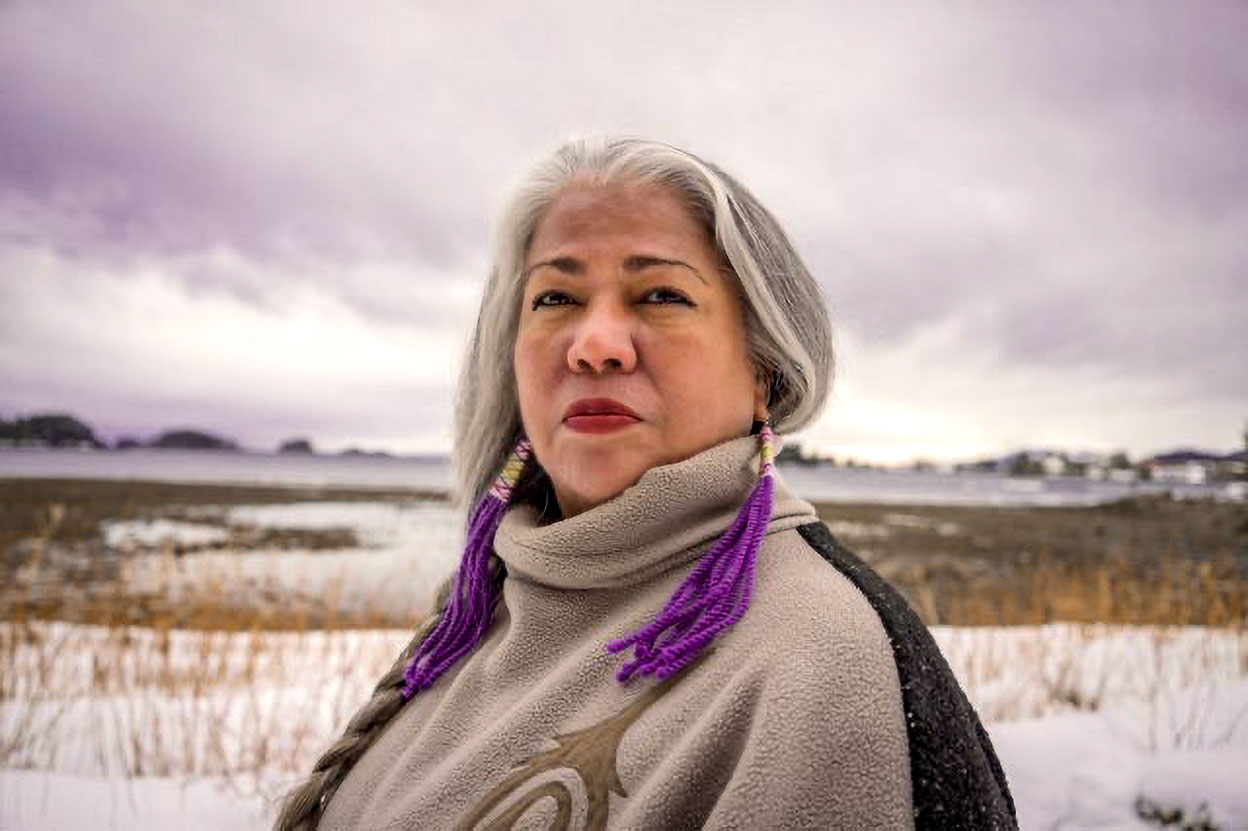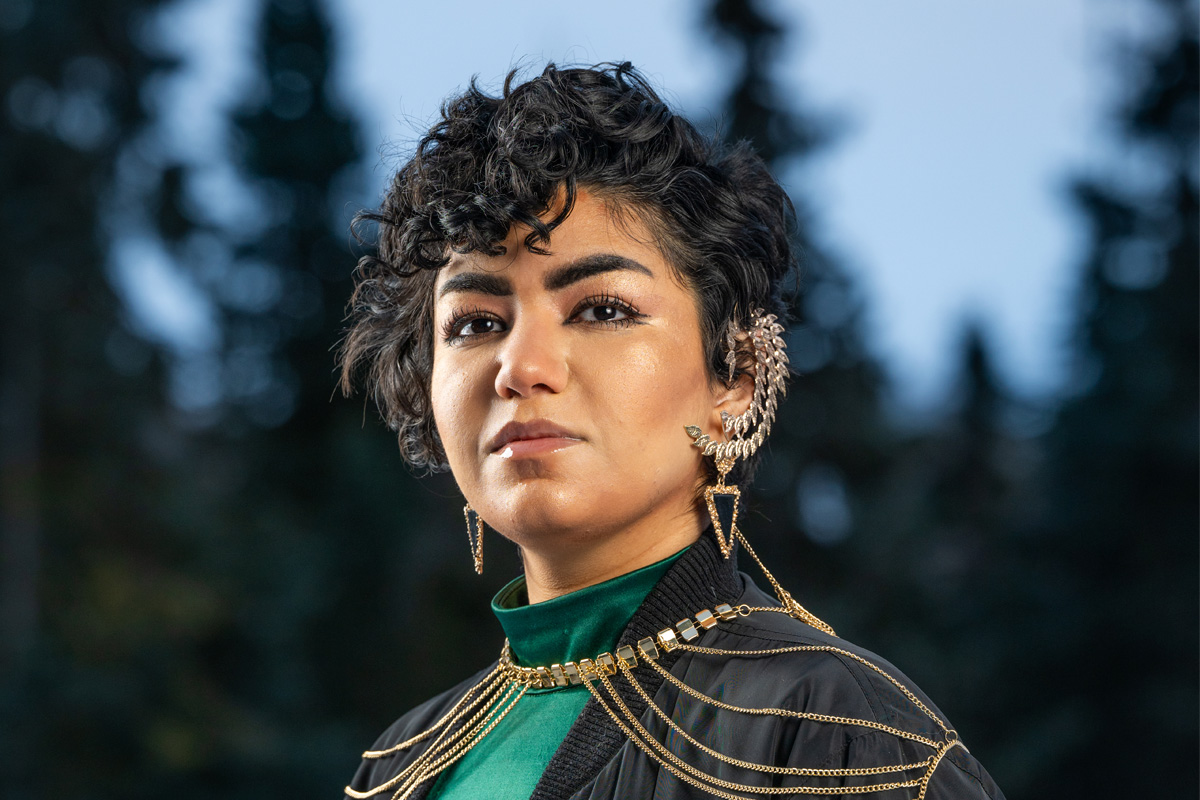Following in her father's ski tracks
by Ian Marks |

A version of this story was originally published in Go Seawolves, the Seawolf Athletics website.
When UAA skier Tuva Bygrave steps into her bindings at the World U23 World Championships in Whistler, B.C., later this month, she will be following her father’s ski tracks.
Tuva, who grew up in Norway, will be representing Australia, her father’s native country and the same country he represented on the world stage in the 1980s.
Tuva’s father Lee was first introduced to Alpine skiing by his mother in her native New Zealand. The family spent a short time in Germany while Lee’s father was working on a post-doctorate, before settling in Canberra, Australia, a two-hour drive from Snowy Mountain.
Skiing was the family sport in the 1970s and Lee joined the local ski club, the Canberra Alpine Club. Lee traded in his Alpine skis for the skinnier Nordic skis after becoming frustrated with the long lines at the ski lifts, becoming predominantly a Nordic skier by the age of 18.
“This was a natural progression as I enjoyed cross country running as a sport at high school,” said Lee.
“The Aussie XC ski crowd was very friendly and inclusive, also when we did competitions, so I increasingly embraced the training and racing culture there. This was during the 1980s. The crowd back then was relatively small and tightly knit — and it remains so to this day. There are currently about 15-20 young male adults who train and race seriously, and a slightly less number of young female adults doing the same. Traditionally, they've had to travel to the Northern Hemisphere during the Aussie summer to get the necessary skills and exposure to be able to compete satisfactorily at an international level, and Norway and Switzerland have been typical first choices for travel destinations in that respect. But sometimes teams or individuals from the Northern Hemisphere have come to ski and compete in Australia, albeit on an ad hoc basis. I remember, for instance, Audun Endestad (from the USA) coming to Australia in the 1980s.”
Endestad grew up in Norway and came to America to teach skiing. He made seven trips to Australia to maximize his time on snow, got a job teaching skiing at Hotham Heights in Australia and won seven Australian National Championships (skiers are allowed to compete in any national championships regardless of citizenship status).
“I liked the Aussies because they were like Alaskans, tough and friendly people,” said Audun.
Audun enjoyed the high-country skiing and races like the Kangaroo Hoppet where he would run into Lee Bygrave, a strong upcoming racer for Australia.
Audun would become part of the U.S. Ski Team, competing at the 1984 Olympics and winning 13 U.S. National Skiing Titles.
Audun met Sally Zack, a member of the U.S. Cycling Team, who would represent America at the 1988 and 1992 Olympics, while they were both training in Colorado. The couple married and had a son, Ari, who is now teammates with Tuva at UAA.
Lee would soon find himself competing with the best skiers on the world stage, first at the 1987 World Student Winter Games and the 1989 World Championships in Lahti, Finland.
“I was not one of the first people to represent Australia on the world stage; there were plenty of good skiers before me — Dave Hislop, Chris Heberle, Colleen Bolton, Chris Allen, to name a few — and there have been plenty of more accomplished skiers after me,” said Lee. “So I was not a pioneer in this context. The only element I pioneered was the introduction of my unique cartoon-like signature depicting a kangaroo on skis and wearing dark shades — a signature I developed when I would be asked by lots of kids in Scandinavia for my autograph (and they asked for my autograph not because of my placement on the race result list — which was usually toward the end — but because I was regarded as a rather quaint element or "exotic species" on the international XC ski circuit).
“My favorite memory during my World Cup days is also one of my worst memories: racing the 50 km classic race at Holmenkollen in Oslo in March 1987,” said Lee. “The race involved doing two laps of a tough 25-kilometer loop, with hundreds of Norwegians — typically in various states of inebriation — lining both sides of the track, yelling and waving in one's face, somewhat akin to some of the famous cycle ascents in the mountain stages of the Tour de France. I had high hopes for the race as I was in good shape, and I was doing pretty well until the snow started to fall heavily on the second lap. This caused fresh snow to ball up on the waxed undersides of my skis which then brought on cramps in my legs which in turn forced me to retire at the 40-kilometer point in a mixture of relief and bitter disappointment — also for the enthusiastic and seemingly empathetic crowd. Even when I ski at Holmenkollen today I have trouble in freeing myself of that memory.”
During his time racing and training in Europe, Lee met an 18-year old woman, Toril. They are still happily married after 35 years.
“I was born in Norway and have also spent most of my childhood there,” said Tuva. “However, my family and I have had three longer stays in Australia — first for a year when I was just a baby, then for a year in primary school (in 2011) and thereafter a semester in high school (in 2018). I’ve also spent pretty much every second Christmas in Australia with my dad’s side of the family.
“When I lived in Australia in 2018, I spent the Southern hemisphere winter competing in ski races there. The races didn’t start off great, but in the last race of the season I ended up qualifying for the Junior National Team. It wasn’t really something I had expected before the season, but it was great as it opened a lot of doors for me — from going on camps with the National Team to representing Australia on the international scene. My dad was part of the Australian National Team back in the 80s and has always had strong ties to the Australian ski community — which is very warm and welcoming.
“After graduating from high school, my plan was to race and train in Australia. However, when COVID hit in the spring of my senior year, races were canceled and there were so many travel restrictions. I didn’t want to just stay at home in Norway, so I looked into the option of skiing on the college circuit in the U.S. I was quite late in applying to schools, but fortunately UAA had an open spot on the team. I had never been to the U.S. before, but it felt like the right choice going to Alaska as I knew of other Aussies here as well as several Norwegians on the team.
The Australian Nordic ski team is small but several of its members have found a second home in Alaska.
Casey Wright, a two-time Olympian for Australia, competed for the Seawolves from 2015-19, and Jessica Yeaton, a two-time Olympian for Australia, moved to Alaska at the age of 12 and competed for Alaska Pacific University.
“I spent a month in Davos (Switzerland) with the Australian Team over Christmas of 2021, rooming with Jess Yeaton and Casey Wright. Jess used to ski for APU and Casey is UAA alumni. It was really valuable living and skiing with the two of them as they are both experienced Olympians and World Cup skiers — and in general just really nice people.”
Tuva regularly competes against another Australian, Rosie Fordham, who competes for rival Alaska Fairbanks.
“Rosie and I know each other from back in 2018 when we were both rookies on the junior national team,” said Tuva. “At U.S. Nationals in Houghton, we skied a major portion of the 20-kilometer classic race together. It was great skiing alongside her, and for us to push each other.”
Tuva and Rosie will once again be teammates at the U23 World Championships in Whistler, B.C., Jan. 29–Feb. 4. The duo will comprise half of the Australian 4x5 mixed relay.
UAA is not the only school that has welcomed Aussies.
“One recent development of note, though, is young Aussie skiers increasingly entering the NCAA system, which has proved to offer a wonderfully useful and generous way to lift the level of Aussie XC skiing,” said Lee. “Tuva's growing prowess is a testament to this, as are the achievements of Casey Wright, Rosie Fordham, Hugo Hinckfuss and other Aussies on the NCAA circuit. So North America is sailing up as an increasingly popular place for Aussie skiers to hone their skills, whereas Scandinavia and Switzerland were more popular in ‘my day.’”
Current UAA coach Trond Flagstad competed against the Aussies while representing Norway on the World Cup stage in the ‘90s. “I think the Australian Ski Federation is doing a good job developing young skiers, and they realize that they need to go to Europe or North America to continue to develop after high school,” said Trond. “I think that is why we see more and more young Australian skiers in the NCAA and also over in Europe.”
Lee and Toril were present when Tuva competed in her first World Cup in Davos in 2021.
She competed at the 2021 World Championships in Oberstdorf, Germany, and the 2022 U23 World Championships in Lygna, Norway.
“The World Championships in 2021 was a really fun and valuable experience,” said Tuva. “However, this year I am racing at the World U23 Championships in Whistler and am excited to compete against girls in my age group and more on my level. I think U23s will be a good steppingstone for future big races.
“One thing I have hopefully learned is to be very careful about training for long periods at high altitude. I had six weeks training in Davos in the Swiss Alps with the Aussie National Team in the early part of last year’s season and pushed myself too hard, which basically sapped a lot of my energy for the remainder of the season. This year I’m trying to be all about recovery and rest!”
Her father Lee shared the same sentiments. “When she began training more seriously and with greater ambition, we (Lee and his Wife Toril) have also advised her to rest and take it easy if she starts to feel overly stressed or tired during the summer and fall, rather than to stick rigidly to the pre-arranged training plan. Concomitantly, we have advised her that maintaining a surplus of energy is vital during the racing season. And we have repeatedly said that having a healthy fulsome diet is crucial at all stages. Further, we have told her to think of her skiing development as a long-term, multi-year process, not as a sprint. These tidbits of advice are not particularly sophisticated or original — any coach or friend would say much the same. But perhaps our emphasis on having fun is a little special, particularly within the arena of elite sports where there is a lot of emphasis on achievement, goals, getting ahead, competitive edge — and where "blood sweat and tears" easily become core ingredients of life.”
UAA coach Trond Flagstad is in charge of handling the training and preparation for Tuva and her busy race schedule.
“Since the U23 Championships are in Whistler, the travel and time change is minimal compared to Europe,” said Trond. “She is spending a little over a week there, and we treat those races as part of her hard session block of training. It will get her in race shape for regionals in mid-February and then on to the NCAA Championships in March. The key is to keep doing some easy distance and strength training in between to build strength and keep the endurance.”
Tuva will compete in the classic sprint on Jan. 29, 20-kilometer classic mass start on Jan. 31, the 10-kilometer individual freestyle on Feb. 3 and the 4x5-kilometer mixed relay on Feb. 4 at the 2023 FIS U23 World Championships.
 "Following in her father's ski tracks" is licensed under a Creative Commons Attribution-NonCommercial 4.0 International License.
"Following in her father's ski tracks" is licensed under a Creative Commons Attribution-NonCommercial 4.0 International License.














